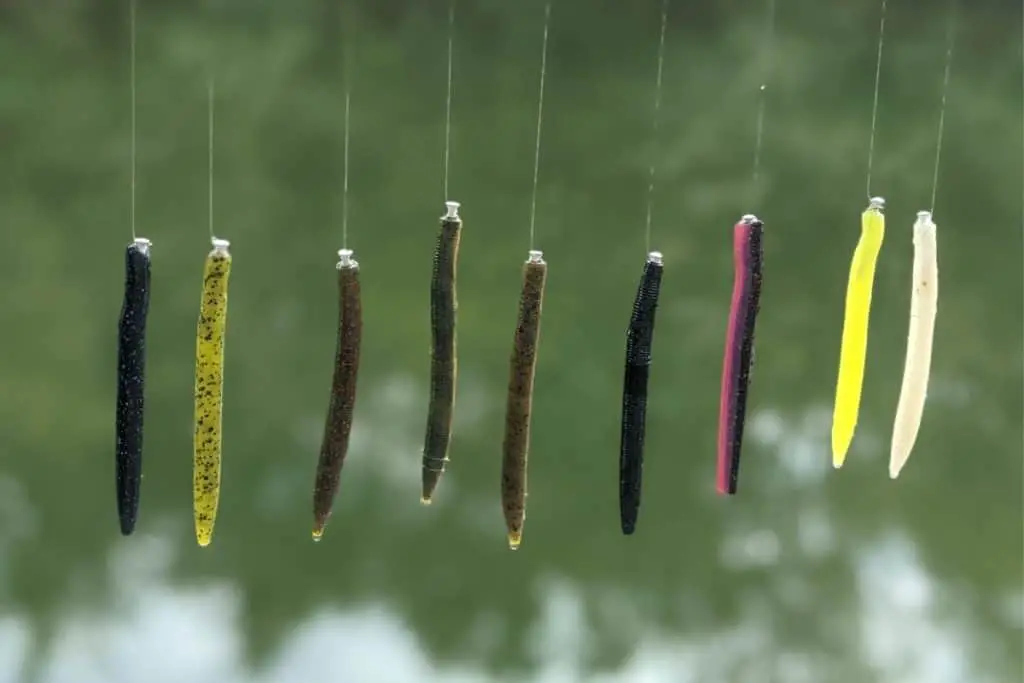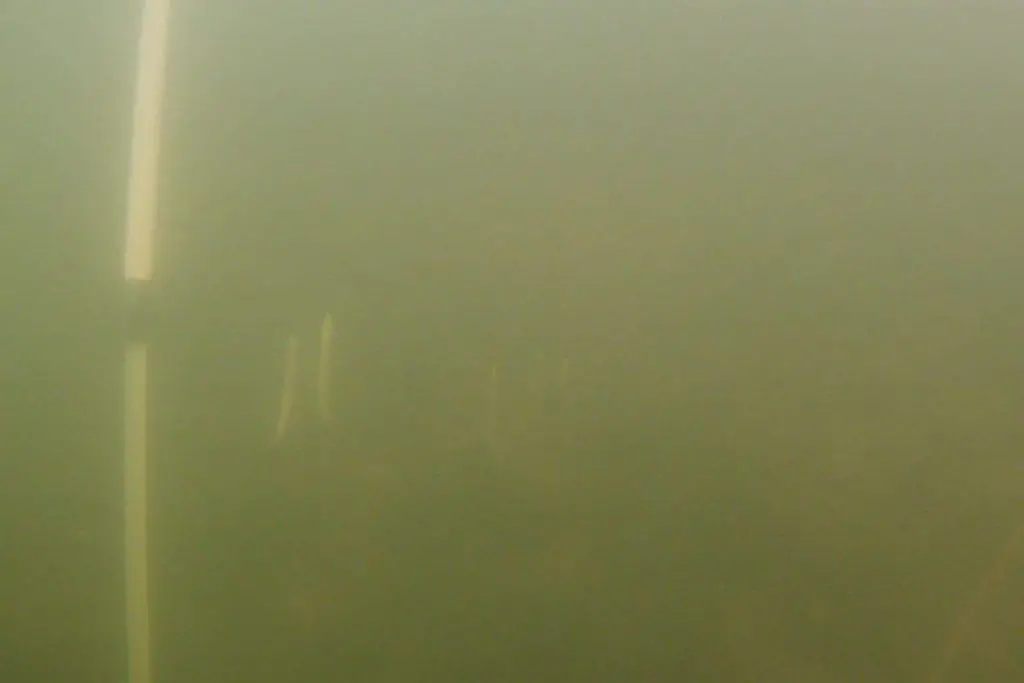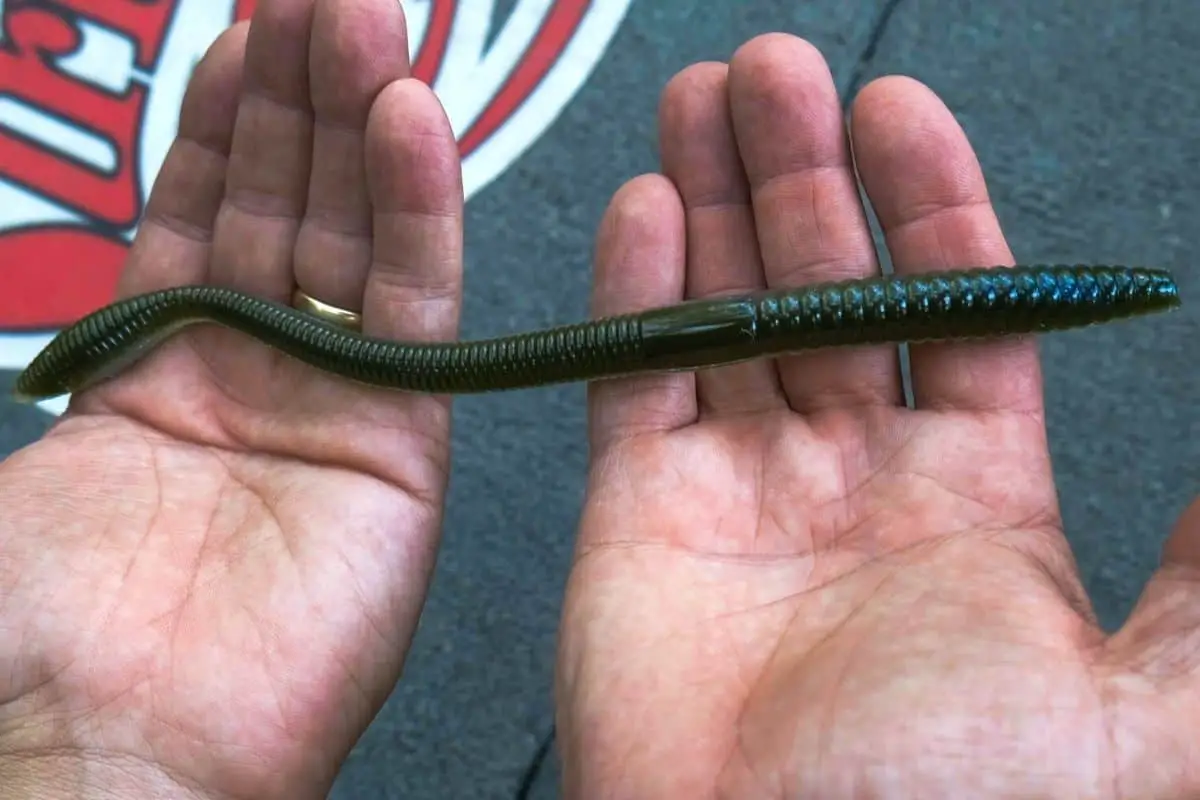Walk into any major tackle retailer and the vast array of lures and colors available is overwhelming. This is especially true with soft plastic lures like worms.
Color choices for soft plastic worms should include green pumpkin, black-blue, junebug, and white. These four choices will cover any situation a bass angler will be presented with.
Bass anglers can often make fishing more confusing than it needs to be. When it comes to color choices, this is definitely the case. While it is fun to amass huge selections for our personal use, decades of past performance have proven these colors will get the job done on any water.
Let the Conditions Determine Which Color to Start With
One of my favorite color tips is from Bassmaster Elite series angler Gerald Swindle.
He often says that an angler only needs two colors – green pumpkin and black-blue. When one doesn’t work, switch to the other. If that one doesn’t work, switch back to the other. It makes me laugh because it is so true.
Water clarity is the first factor that anglers face.


Common thought dictates that we use natural colors in clear water and solid dark colors in dirty and stained conditions.
For example, tie on green pumpkin and white in water with good visibility and black-blue and junebug in lakes and rivers with stain to it. This will work. For sure.
But recent experiments I have done underwater with a range of colors have changed my thinking on this. Here is the article I did on lure color in various conditions.
I now prefer to use white in really dirty water. My tests have shown that white can be seen better in dirty water than the traditional black or black-blue.
When In Doubt – Always Go With Natural Colors When Worm Fishing
There are times when our confidence as bass anglers is in serious doubt. We switch colors every few casts attempting to find that magic formula that will make bass jump inside the boat.
We often create more chaos than success when we get to this point.
When my brain is playing these tricks and my confidence is at an all-time low, I remind myself that the prey species of bass are basically the same color patterns no matter where they are and in what types of water.
For example, a bluegill looks like a bluegill anywhere.
Yes, these panfish will have more vibrant and defined colors in clear water and less so in dirty water, but you get what I am saying.
In other words, green pumpkin is always going to be a solid choice. It looks natural and mimics the color patterns of a variety of prey species.
(Here is an article on the best gear ratio for fishing soft plastics.)
The Power of Fishing a Junebug Worm
Junebug is one of those colors that stand out in the bass fishing world.
The color pattern doesn’t necessarily match a specific prey species or even look like something that one might find in the water column. Yet it has proven itself in both the amateur ranks and professional circles for many decades.
Certain regions cater to specific colors.
Florida is a perfect example. Junebug does excellent in Florida waters.
It may be that the vast fisheries with tanic colored water are perfectly suited for the junebug color pattern. Or maybe it is something else? But it cannot be denied that Florida bass put the smackdown on junebug soft plastics, including plastic worms.
Other Soft Plastic Worm Colors to Consider
As seen in the above photos from stained and dirty water, the combination of white & chartreuse is another powerful color choice.
These two colors working together not only stand out in low-visibility conditions, but white/chartreuse is also a great choice in clear water.
Baitfish, like shad, are often best matched with lures in that white-to-silver spectrum. If there are lots of panfish in your lakes and rivers, then the colors these prey fish are patterned with include many more pieces of the rainbow.
One other color that you will find piled in my tackle collection is watermelon with red flake.
This more translucent option does well in sunny conditions. The red flake shimmers and attracts attention from a distance.
If I choose to swim a worm, then watermelon with red flake is likely to come out of my tackle box for the aforementioned reasons.
How to Tell if The Soft Plastic Worm Color Choice is Correct?
This is a terrific question.
It is easy to second-guess color choices and keep switching them again-and-again. Here is how I tell if the color is dialed in or if I should switch it up.
How did the bass eat the lure? How did they hit the lure?
The more aggressive the bite and the more the bass inhales the lure, the more confident I am that the color choice is a good one.
If the bass are just nipping at the worm or taking it sluggishly, then I will often change colors.
Of course, if the bass are feeding aggressively color choice is not nearly as important. Our goal as bass anglers should be to induce the best and strongest bites we can. Adjusting color, as well as lure size, presentation, and speed is one way to dial in the best bite possible.
Good luck and be sure to encourage someone today. You never know how you may change their life forever.
Isaiah 6:8

